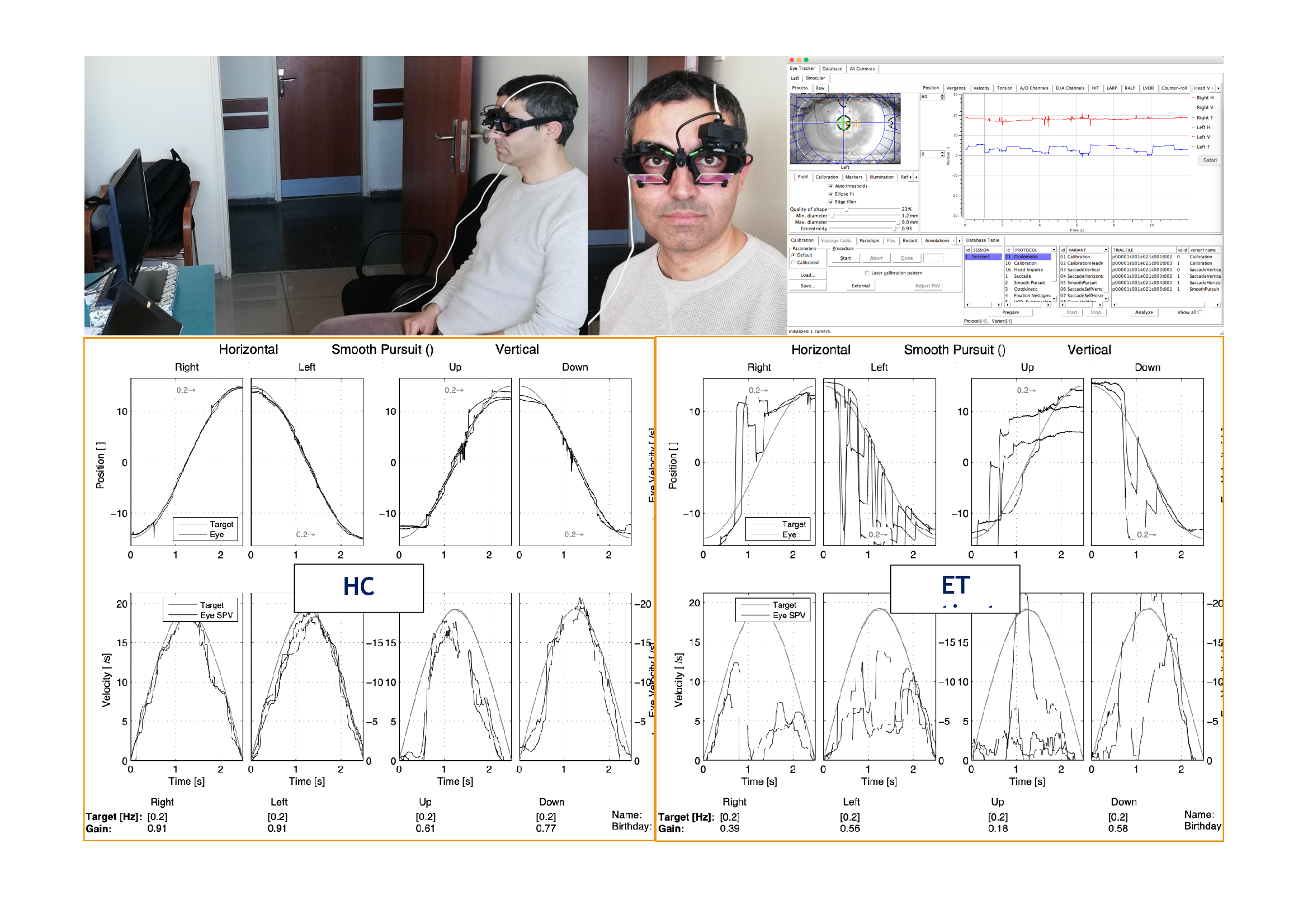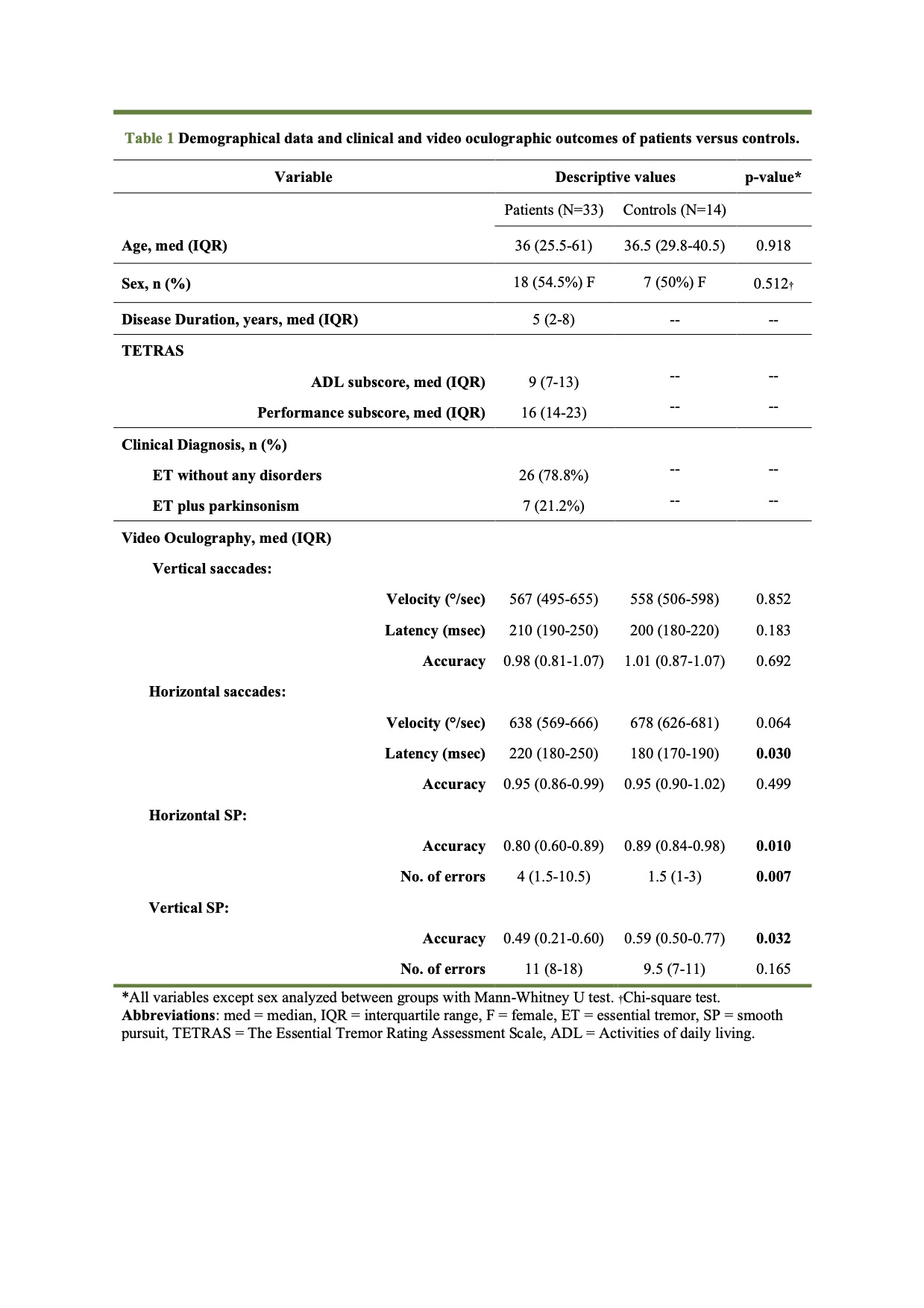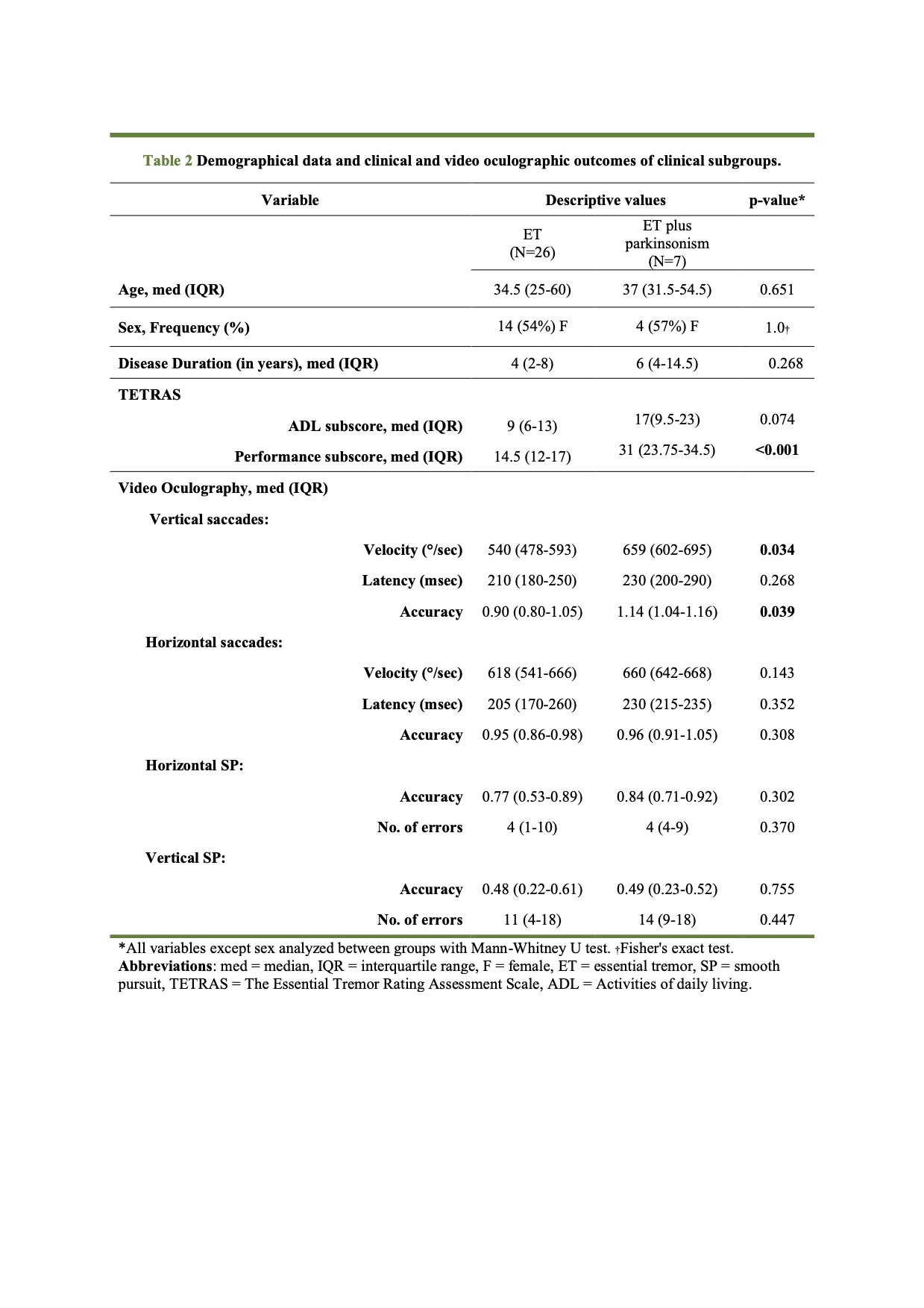Category: Tremor
Objective: We investigated whether saccades (Sac) and smooth pursuits (SP) recorded via video oculography (VO) differ in patients with essential tremor (ET) by comparison with healthy controls (HC).
Background: Studies that addressed gaze abnormalities in ET patients are few[1,2], especially on SP. The only study probing VO features of ET vs. ET plus parkinsonism found no difference[3]. Besides, the adoption of VO for ET research and practice has not been elucidated.
Method: We gathered 47 participants (33 ET [7 ET + parkinsonism] and 14 controls) and performed clinical and VO assessments between Aug 2019 and Feb 2020. Tremor and parkinsonism were evaluated with the Essential Tremor Rating Assessment Scale and UPDRS-3, respectively.
The VO configuration consisted of a monitor, a goggle with an infrared camera, and a laptop equipped with proprietary software [Figure1]. After a training and calibration task, participants sequentially performed vertical and horizontal reflexive Sac, and SP tasks.
Velocity, latency (~200msec) and accuracy (normal range of 1.0 ± 0.1) were the main Sac parameters [4]. The parameters of SP were accuracy and number of errors (nE, number of excursions from the target slope). Normative values for Sac and SP were previously reported for both conventional and flexible VOs [4,5]. Yet, we preferred to use our controls as normative to avoid inconsistency. The differences between groups were tested by univariate analysis. The local institutional review board approved the study.
Results: Clinical and VO outcomes were outlined in Table-1. Horizontal Sac latency and SP-nE were significantly higher, whereas SP accuracy was significantly lower in the ET group. Also, ET + parkinsonism patients had significantly higher vertical Sac velocity and accuracy by comparison with the remaining ET patients (Table-2).
[table1]
[table2]
Conclusion: We report for the first time that patients with ET display not only Sac abnormalities but also imprecision of SP. Irregular eye movements with increased latency may indicate cerebellar-thalamocortical circuitry problems in ET. In addition, VO may be a promising tool to differentiate ET vs. ET plus parkinsonism in practice.
References: [1] Wójcik-Pędziwiatr M, Plinta K, Krzak-Kubica A, et al. Eye movement abnormalities in essential tremor. Journal of Human Kinetics. 2016;52:53-64. [2] Gitchel GT, Wetzel PA, Baron MS. Slowed Saccades and Increased Square Wave Jerks in Essential Tremor. Tremor and Other Hyperkinetic Movements. 2013;3:tre-03-178-4116- 4112. [3] Wójcik-Pędziwiatr M, Mirek E, Rudzińska-Bar M, Szczudlik A. Eye movements in essential tremor patients with parkinsonian and cerebellar signs. Neurologia i Neurochirurgia Polska. 2017;51(4):299-303. [4] Hopf S, Liesenfeld M, Schmidtmann I, Ashayer S, Pitz S. Age dependent normative data of vertical and horizontal reflexive saccades. PLoS One. 2018;13(9):e0204008-e0204008. [5] Dowiasch S, Wolf P, Bremmer F. Quantitative comparison of a mobile and a stationary video-based eye-tracker. Behavior Research Methods. 2019.
To cite this abstract in AMA style:
T. Sahin, R. Yilmaz, M.C Akbostanci. Saccadic and Smooth Pursuit Derangements in Essential Tremor: A Video Oculography Study [abstract]. Mov Disord. 2020; 35 (suppl 1). https://www.mdsabstracts.org/abstract/saccadic-and-smooth-pursuit-derangements-in-essential-tremor-a-video-oculography-study/. Accessed December 16, 2025.« Back to MDS Virtual Congress 2020
MDS Abstracts - https://www.mdsabstracts.org/abstract/saccadic-and-smooth-pursuit-derangements-in-essential-tremor-a-video-oculography-study/



